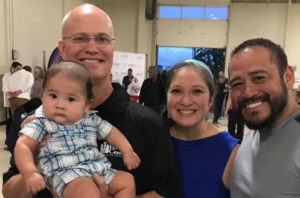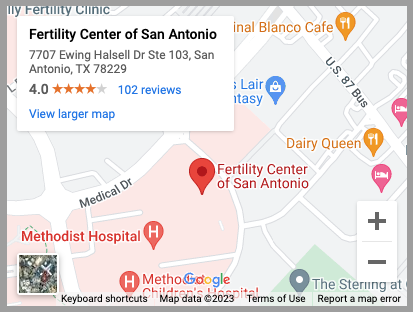For those who have had difficulty conceiving or want to start a family on their own, in vitro fertilization, or IVF, can make the dream of starting a family a reality.
During IVF, multiple eggs are harvested and fertilized. This often leads to multiple viable embryos, one or more of which may be transferred to the uterus.
Our team explains single versus multiple embryo transfer at the Fertility Center of San Antonio in San Antonio, TX. For more information about single versus multiple embryo transfer, and which is right for you, we welcome you to schedule a consultation with one of our doctors.
Why Transfer a Single Embryo?
Single embryo transfer is often chosen by women and couples who want to prevent multiple births. Although multiple children may be desired, carrying more than one baby at once increases the risk to the mother and unborn children.
Twins are more likely to be born prematurely and at lower birth weights than singletons. The risk is greater with triplets and increases even more as the number of babies increases.
Likewise, the risk to the mother increases with the number of babies in utero. Women carrying multiple babies are more likely to develop gestational diabetes and preeclampsia as well as other complications.
Which Women Benefit Most from Transferring a Single Embryo?
Generally, women who undergo IVF treatment at a younger age, typically under 35, see the same success rates when a single embryo is transferred versus multiple embryos.
Women who are older may not see the same success rates and therefore, single embryo transfer may not be the preferred choice.
Why Transfer Multiple Embryos?
It’s common for those who undergo IVF to want to become pregnant as fast as possible and with as few IVF treatments as possible. Because of this, many patients choose to have multiple embryos transferred at one time.
Although transferring multiple embryos can increase the chances of successfully conceiving, this isn’t necessarily true for all women and not all women need to have multiple embryos transferred in order to successfully conceive.
Which Women Benefit Most from Multiple Embryo Transfer?
Multiple embryo transfer is not right for all patients. When deciding if more than one embryo should be transferred, the primary factor to consider is a woman’s age.
Generally speaking, women who are over the age of 35 often have a better chance of conceiving when multiple embryos are transferred instead of one. This is most likely due to the fact that a woman’s egg quality decreases as she ages, and egg quality affects the embryo’s ability to implant within the uterus.
Women under the age of 35 generally have good success rates when a single embryo or multiple embryos are transferred. For this reason, younger women undergoing IVF with multiple embryo transfer should be prepared for the chance of having twins or multiple births.
Can Older Women Have Success with Single Embryo Transfer?
Older women can have success with single embryo transfer, especially if their eggs were harvested before they turned 35.
Egg quality declines as a woman ages, a decline that generally starts around the age of 35. Harvesting a woman’s eggs before the age of 35 and freezing them for later use preserves the quality of the eggs and can help women successfully conceive in their late 30s and into their 40s without transferring multiple embryos at once.
Is Fertility Treatment Right for You?
If you have had difficulty conceiving, fertility treatment may be right for you. To learn more about available treatments, please call (210) 692-0577 to schedule a consultation.










